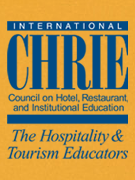Publication Date
2018
Executive Summary
The global lesbian, gay, bisexual, and transgender (LGBT) population accounts for about 450 million people, with $3.7 trillion spending power per year2. With the rise of the “pink economy,” LGBT tourism destinations and suppliers have found ways to attract the LGBT tourist through increased target marketing, unique product offerings, and a welcoming environment. Most marketing campaigns targeting LGBT tourists have focused on acquiring LGBT tourists to larger cities with established LGBT communities. Thus, this study discusses the tourism preferences of LGBT tourists traveling to a smaller, regional city. LGBT consumers form their own unique subcultures, and consumption activities reflect their unique lifestyle and identity. These attributes are evident in the gay “servicescape,” which can be defined as physical spaces, such as restaurants, hotels, and events that LGBT consumers often seek while traveling. This report starts the discussion of how smaller cities can reap the economic and non-economic benefits of attracting the LGBT tourist.
Data were collected using online-survey procedures in which 208 LGBT local (from the state of the study destination) and regional (from neighboring states) participated. A series of linear regressions analysis was used to examine the relationships between small city destination attributes and LGBT segment intentions to visit the study destination.
Recommended Citation
Olson, Eric D.; Su, Ching-Hui; and Tsai, Chin-Hsun
(2018)
"Preferences of LGBT Tourists Traveling to Smaller Cities,"
ICHRIE Research Reports: Vol. 3:
Iss.
1, Article 2.
DOI: doi.org/10.61701/613138.02
Available at:
https://via.library.depaul.edu/ichrie_rr/vol3/iss1/2


